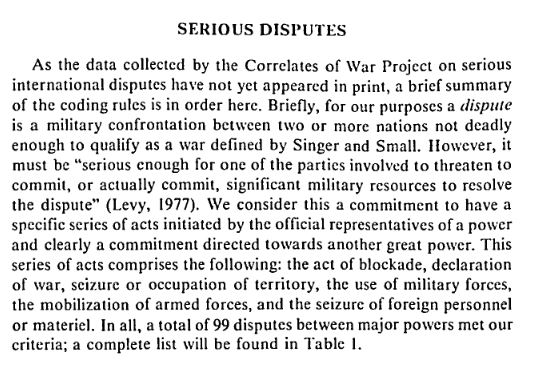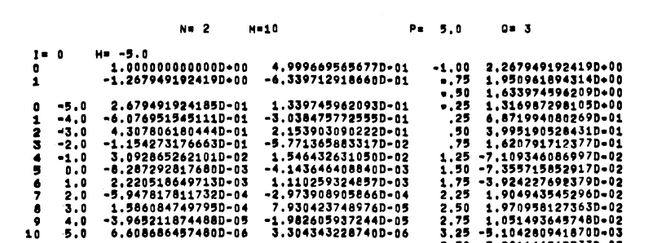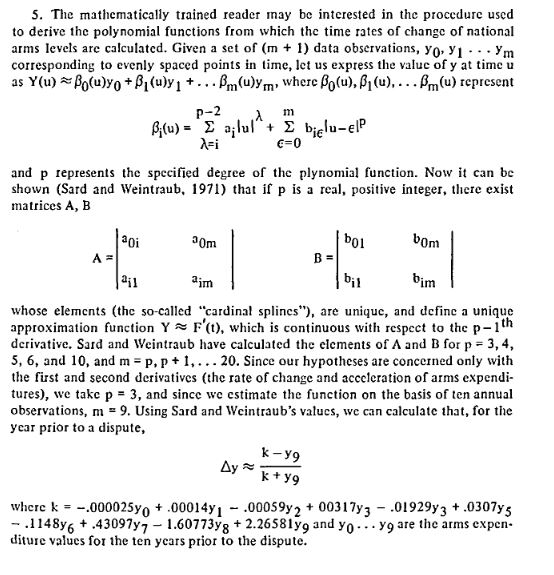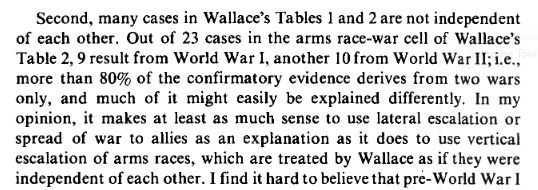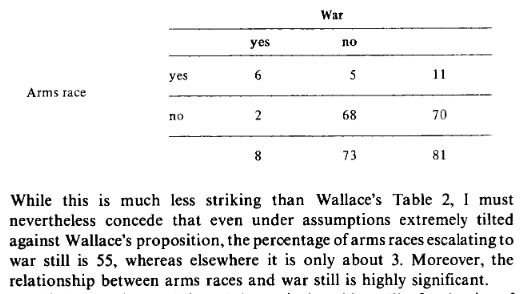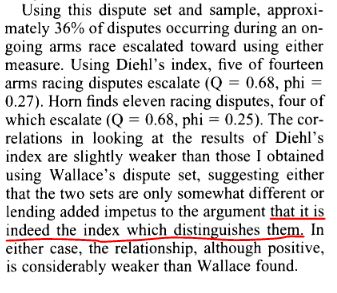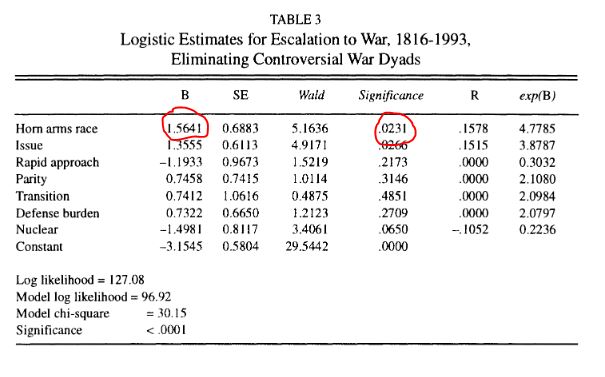We& #39;ve had a few days to reflect on  https://abs.twimg.com/emoji/v2/... draggable="false" alt="🇺🇸" title="Flag of United States" aria-label="Emoji: Flag of United States"> wanting to spend
https://abs.twimg.com/emoji/v2/... draggable="false" alt="🇺🇸" title="Flag of United States" aria-label="Emoji: Flag of United States"> wanting to spend  https://abs.twimg.com/emoji/v2/... draggable="false" alt="🇷🇺" title="Flag of Russia" aria-label="Emoji: Flag of Russia">&
https://abs.twimg.com/emoji/v2/... draggable="false" alt="🇷🇺" title="Flag of Russia" aria-label="Emoji: Flag of Russia">& https://abs.twimg.com/emoji/v2/... draggable="false" alt="🇨🇳" title="Flag of China" aria-label="Emoji: Flag of China"> "into oblivion"
https://abs.twimg.com/emoji/v2/... draggable="false" alt="🇨🇳" title="Flag of China" aria-label="Emoji: Flag of China"> "into oblivion"
Not encouraging. But are Arms Races really that bad?
Let& #39;s turn to the data! https://www.reuters.com/article/uk-usa-armscontrol-idUSKBN22X2LS">https://www.reuters.com/article/u...
Not encouraging. But are Arms Races really that bad?
Let& #39;s turn to the data! https://www.reuters.com/article/uk-usa-armscontrol-idUSKBN22X2LS">https://www.reuters.com/article/u...
Let& #39;s start at the beginning.
The key early empirical work was "Arms and Insecurity" by Richardson (pusblished posthumously in 1960) https://www.google.com/books/edition/Arms_and_insecurity/XYfeAQAACAAJ?hl=en">https://www.google.com/books/edi...
The key early empirical work was "Arms and Insecurity" by Richardson (pusblished posthumously in 1960) https://www.google.com/books/edition/Arms_and_insecurity/XYfeAQAACAAJ?hl=en">https://www.google.com/books/edi...
With the data available at the time, Richardson argued that there didn& #39;t seem to be much of a relationship
Things really picked up steam with a debate in the Journal of Conflict Resolution between Michael Wallace and Erich Weede
In 1979, Wallace published a piece using recently available "Correlates of War" ( https://correlatesofwar.org/ )">https://correlatesofwar.org/">... data https://journals.sagepub.com/doi/abs/10.1177/002200277902300101?casa_token=qc5c7KTn35IAAAAA:e6rjaArkeNQbMAQpFwvu7qc9HMQbH6qGUrXTZ6Sa7B_x7WBNZQVX1FVdXUVFQy5Dz25R1HggpMg">https://journals.sagepub.com/doi/abs/1...
For IR scholars who work with IR data, this piece is notable as it is the first piece to use what we now call "Militarized Interstate Dispute" (MID) data. He used these "serious disputes" to create a sample of state-to-state pairs that were likely to enter arms races
For his outcome variable, Wallace identified which of these dyads entered war (23 out of 99).
Note: I think the 96 is a typo
Note: I think the 96 is a typo
How did he capture whether an Arms Race was actually taking place within a dyad? Well, that& #39;s where things get tricky, which Wallace admits
That book has a table (Table 1) that literally lists a bunch of values that can be used to create a polynomial
As he describes in this footnote, those polynomials can be used to take the expenditure values from the previous 10 years to produce a "time rates of change of national arms levels"
Multiplying the "times rates of change of national arms levels" of both states in the dyad gives the "Arms Race Index" value for that dyad during the year of a dispute
If you look at the whole dataset, you& #39;ll notice that Russia is in A LOT of the dyads.
I& #39;ve talked about this before https://twitter.com/ProfPaulPoast/status/1204745930144174080">https://twitter.com/ProfPaulP...
I& #39;ve talked about this before https://twitter.com/ProfPaulPoast/status/1204745930144174080">https://twitter.com/ProfPaulP...
So what does Wallace find? His findings are pretty self-explanatory: Arms Races and War are VERY closely associated
But Weede raised some concerns about this finding https://journals.sagepub.com/doi/10.1177/002200278002400205">https://journals.sagepub.com/doi/10.11...
The main concern is that most of the "war" dispute-dyads come from just two events: World War I and World War II.
The problem of using dyadic data to evaluate multilateral events is a problem that has been highlighted by a number of scholars, such as @SarahCroco & Teo in @cmpseditors ... https://www.tandfonline.com/doi/abs/10.1080/07388940590915291">https://www.tandfonline.com/doi/abs/1...
..and https://abs.twimg.com/emoji/v2/... draggable="false" alt="🙋♂️" title="Happy man raising one hand" aria-label="Emoji: Happy man raising one hand"> in @polanalysis https://www.cambridge.org/core/journals/political-analysis/article/misusing-dyadic-data-to-analyze-multilateral-events/E4949AE9471344F9E6A2E0536CFD09FE">https://www.cambridge.org/core/jour...
https://abs.twimg.com/emoji/v2/... draggable="false" alt="🙋♂️" title="Happy man raising one hand" aria-label="Emoji: Happy man raising one hand"> in @polanalysis https://www.cambridge.org/core/journals/political-analysis/article/misusing-dyadic-data-to-analyze-multilateral-events/E4949AE9471344F9E6A2E0536CFD09FE">https://www.cambridge.org/core/jour...
Accounting for this problem severly weakens the finding, though the overall relationship of arms racing being associated with war onset remains
As can be expected, Wallace disagreed and wrote a response https://journals.sagepub.com/doi/pdf/10.1177/002200278002400207">https://journals.sagepub.com/doi/pdf/1...
But both Wallace and Weede agree that there seems to be a relationship between arms racing and war onset.
Work continued during the 80s and early 1990s. Notable are contributions from Paul Diehl, such as this piece in @JPR_journal which finds that the relationship between arms racing and war is, at best, weak https://journals.sagepub.com/doi/abs/10.1177/002234338302000301?casa_token=wxGmvxrBYa0AAAAA:Yd0qfI96S1VVRNCvdqmps7pxsAUcW7IwIHW40wirVGR33vg3kQAj0sUTkze-QkUIhndE26zTokg">https://journals.sagepub.com/doi/abs/1...
But the key contributions come from Susan Sample in the late 1990s, starting with her 1997 @JPR_journal piece (I mean, the piece is subtitled "Resolving the debate"!) https://journals.sagepub.com/doi/abs/10.1177/0022343397034001002?casa_token=ZGEhhar0XvcAAAAA:SmsqVJnO3EhkiX64QJ-ArreIQ9zZrbwemMuXlz7wrx3NNPcWX6RLYDpBqZtalTCO9Hv9cA09R-0">https://journals.sagepub.com/doi/abs/1...
She reevaluates all of the previous work. She finds that the differences between Diehl and Wallace is largely due to differences in measuring arms race (namely, the weights they place on the pre-ceeding years)
The following year, Sample published a piece in the Journal of Conflict Resolution that finally used multivariate analysis to the evaluate the arms race-war relationship https://journals.sagepub.com/doi/abs/10.1177/0022002798042002002">https://journals.sagepub.com/doi/abs/1...
Note that she uses "Horn Arms Race". Horn used a different measure of arms racing from Wallace or Diehl
Sample then took the analysis a step further in her contribution to the first edition of "What Do We Know About War" https://www.google.com/books/edition/What_Do_We_Know_about_War/U_FI-kiXfSsC?hl=en&gbpv=1&printsec=frontcover">https://www.google.com/books/edi...
This finding is still considered the key finding of the empirical Arms Race literature. See, for example, this relatively recent review piece by Jeffrey Pickering & David F. Mitchell https://oxfordre.com/politics/view/10.1093/acrefore/9780190228637.001.0001/acrefore-9780190228637-e-390">https://oxfordre.com/politics/...
Of course, I wonder if this post-1945 "null" is driven by the Cold War not actually becoming a direct war?  https://abs.twimg.com/emoji/v2/... draggable="false" alt="🤔" title="Thinking face" aria-label="Emoji: Thinking face">
https://abs.twimg.com/emoji/v2/... draggable="false" alt="🤔" title="Thinking face" aria-label="Emoji: Thinking face">
So arms races might be wasteful and they surely don& #39;t help to resolve tensions. But the data say that, since 1945 at least, they haven& #39;t been strongly associated with war onset.
So maybe they are not all THAT bad? https://abs.twimg.com/emoji/v2/... draggable="false" alt="🤷♂️" title="Man shrugging" aria-label="Emoji: Man shrugging">
https://abs.twimg.com/emoji/v2/... draggable="false" alt="🤷♂️" title="Man shrugging" aria-label="Emoji: Man shrugging"> https://abs.twimg.com/emoji/v2/... draggable="false" alt="🤔" title="Thinking face" aria-label="Emoji: Thinking face">
https://abs.twimg.com/emoji/v2/... draggable="false" alt="🤔" title="Thinking face" aria-label="Emoji: Thinking face">
[END]
So maybe they are not all THAT bad?
[END]

 Read on Twitter
Read on Twitter
